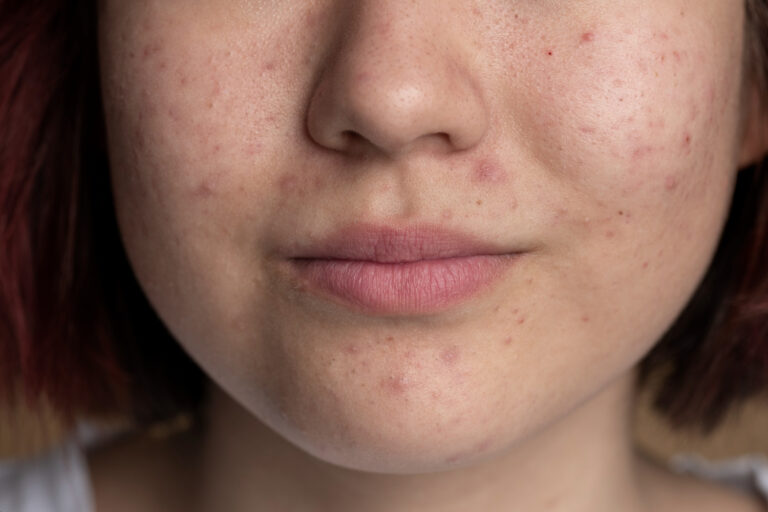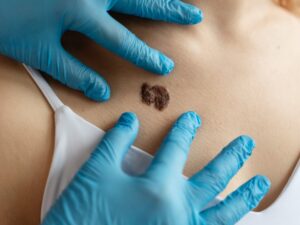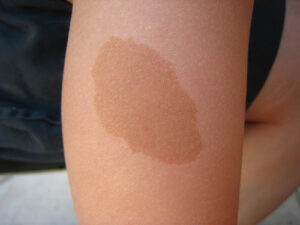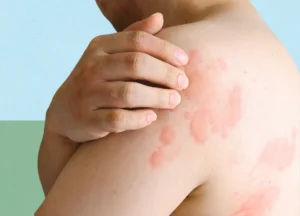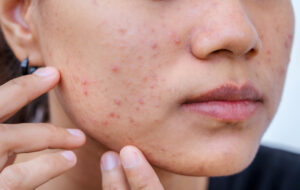Key Pointers
- Fractional laser therapy can help improve acne scars, pigmentation, and uneven texture.
- It works by creating controlled micro-injuries that stimulate skin renewal.
- Not all skin conditions are suitable for laser treatment.
- A dermatologist’s assessment ensures safety and best outcomes.
Fractional laser treatment has become one of the more popular dermatology procedures for improving skin texture and tone. It is often used for acne scar improvement and facial rejuvenation, but can it also help with other skin diseases like eczema, pigmentation, or sun damage?
In this article, we break down what fractional laser treatment can and cannot do, and why consulting a dermatologist is essential before deciding on any laser procedure.
How Fractional Laser Works
Fractional lasers uses tiny beams of lasers to create microscopic columns of controlled injury in the skin. This triggers the body’s natural healing process, stimulating collagen production which tightens the skin and improves skin texture.
As only a fraction of the skin is resurfaced at a time, healing after fractional laser resurfacing tends to be faster than with traditional laser resurfacing.
Fractional lasers may be ablative (removing thin layers of skin, such as fractional CO₂ lasers) or non-ablative (heating tissue beneath the surface without removing it). The choice depends on the condition being treated and the individual’s skin type.
What Fractional Laser Resurfacing Can Do
1. Improve acne scars
Fractional CO₂ laser treatment is often used to soften the appearance of depressed or uneven acne scars by stimulating collagen production and resurfacing the skin. It can help smoothen out textural irregularities over a series of sessions.
2. Reduce pigmentation and sun damage
Mild pigmentation and sun-related changes, such as uneven skin tone, fine lines, or dullness, can be improved with fractional laser treatment. By promoting cell renewal, it helps to fade away discoloration and refresh the skin.
3. Refine enlarged pores and rough texture
Fractional laser treatment can help minimise the appearance of large pores and improve facial skin texture
4. Improve fine lines and early ageing
By stimulating collagen production, fractional laser resurfacing may help reduce fine lines, tighten and smoothen skin.
What Fractional Laser Resurfacing Cannot Do?
While fractional laser can improve many skin issues, it is not suitable for all conditions:
- Eczema or active dermatitis: Laser energy can worsen inflammation and should not be used on active rashes or irritated skin.
- Active acne or infections: The treatment should only be performed once the skin is clear of active breakouts to avoid worsening the inflammation, irritation or complications.
- Deep pigmentation or melasma: Certain pigment conditions can be unpredictable with laser and may require alternative treatments or a combination approach.
Understanding these limitations helps prevent unwanted side effects and ensures the right treatment is chosen for each skin concern.
Why Dermatologist Supervision Matters
Although lasers are widely available, the settings, wavelength, and technique must be tailored precisely to each patient’s skin condition, tone, and medical history.
A dermatologist can:
- Evaluate if fractional laser is the best option.
- Adjust laser intensity to minimise downtime and side effects.
- Combine laser treatment with other therapies for better results.
- Ensure safe procedures and proper aftercare for sensitive or darker skin types.
Frequently Asked Questions About Fractional Laser Resurfacing
1. Is fractional laser safe for all skin types?
It can be used safely on most skin types when performed by a trained dermatologist. However, non-ablative lasers may be better suited for darker skin tones to reduce the risk of post-inflammatory pigmentation. Fractional laser resurfacing is not recommended in very tanned individuals.
2. How long is the recovery time?
Recovery varies depending on the type and depth of treatment. Ablative laser resurfacing may take one to two weeks to heal while only a few days of recovery is expected after non-ablative resurfacing.
3. How many sessions are needed?
Most people need several sessions, spaced 6 to 8 weeks apart, to achieve noticeable improvement. Your dermatologist will recommend a schedule based on your goals.
4. Can I do fractional laser if I have sensitive skin?
Those with sensitive or reactive skin should discuss this with their dermatologist first. In some cases, gentler non-ablative lasers or alternative treatments may be more suitable.
Fractional laser resurfacing can do a lot of good for our skin, but it is not the right solution for all skin problems. Conditions like eczema or melasma may need other forms of management.
Before undergoing any laser procedure, it’s best to get professional advice to ensure safety, effectiveness, and results suited to your skin’s needs.
Book a Consultation with About Dermatology
At About Dermatology, we offer a range of laser and dermatologic treatments tailored to individual needs. Led by Dr Melissa Tan, Senior Consultant Dermatologist, our clinic provides medical, surgical, paediatric, and laser dermatology services in a safe and professional environment.
- Conveniently located at Farrer Park Hospital
- Monday to Saturday (by appointment)
- Call us at 6518 4336 or book a consultation online
Have a healthy and clear skin. Speak with a dermatologist today.

